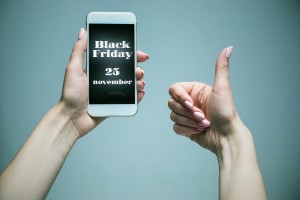SHASHWITH UTHAPPA on 24 November, 2016 at 03:11
How brands can make the most of the holiday season with the power of mobile.
The holiday season is about to kick off, and you can feel the anticipation building. Black Friday and Cyber Monday are poised to launch just as soon as the sales get posted. People are saving up for big gifts, checking credit balances, and unleashing the urge to make someone feel special. In short, this is the golden quarter when there’s a renewed willingness to spend (according to eMarketer Study). While the tactics and promotions for the 2016 season are in the bag already, it’s a good time for brand marketers to watch carefully so that when the next holiday season rolls around, you’ve got the best, most tested holiday marketing tactics.
Round the clock connection:
Our lives are soaked with technology, and we keep diving deeper. But our need for connection stays the same. About 72% of adults in the U.S have a smartphone, and 71% of them sleep with their mobile phones and tablets within reach. [1] This gives brands a unique opportunity to connect in incredibly intimate and emotional ways. They must be careful, however. Few consumers will love your brand if it makes unwanted intrusions in your bedroom.
The digitization of brick and mortar stores has led to an increase in online shopping (32.2% YOY). Fifty-three percent of those sales have come through mobile. However, this doesn’t ring the death knell for physical stores without eCommerce connections. Brands that create a seamless consumer purchase journey between mobile and in-store are in it to win it with 73% of mobile searches following up with purchases in-store. Virtual and augmented reality and IoT will make this even more interesting for consumers and marketers alike.
A quick look into mobile analytics shows that consumers engage earlier on popular days. Does that translate into planning and promoting your offering earlier than others? Probably, but there is such a thing as too early. Several brands have publicly bucked this trend in 2016. The jury is still out on how that impacts performance.
Regardless of when you begin, there are two areas of holiday marketing that marketers must address every year:
Holiday Emotion: What is the key emotion you’re trying to tap into? As you’d expect, the media is pretty cluttered for attention. What you should ultimately be trying is to understand the needs of the customer. Build a relationship with them. Create rituals with customers like you would with a friend. It may only run a few months a year, but it is a ritual nevertheless.
Just consider what American Express has done with Small Business Saturday. Several years in, and now it’s part of the culture. Rituals can be multidimensional, even if you don’t have the scope of a huge brand like Amex. Holiday campaigns and their rituals of all sizes provide value to customers during the season, especially those that use mobile. News Feed cards, for example, when paired with push notifications, emails and targeted in-app messages, can help brands maximize their impact. For example, Urban Outfitters used News Feed cards using location targeting to drive in-person sales.
Customer Data: Data helps create and optimize holiday campaigns. Yes, you know this, but it is wise to keep it in mind as you watch this holiday season unfold. Are the brands you’re watching making full use of the consumer journey? It’s more than just a quick check in on the customer profile these days. The brands that show the best behavior have a complete view of customer needs and user behavior through a long list of data points such as engagement on emails, push notifications, wearables feeds, and transaction history. They also analyze where and why a customer falls off the expected customer journey. Seventy-eight percent of abandoned carts are never used according to a Digiday report. Let’s see if brands do a better job of helping consumers pick up where they left off this year.
One brand that’s making strides here is 1-800 Flowers. Their personalized performance based marketing emails experimented with an expiring coupon code to incentivize buying within 1 hour. The conversion rate was 350%. That’s one approach. But multivariate testing can help define what kind of messaging works. So can “send time optimization,” which helps pin down when users are likely to action on your mobile activations.
Research shows there is a 57% uplift in conversion when images are added to messages (for push notifications – images, emojis, gifs). [2] Now, with iOS 10, brands can create videos and rich in-app experiences directly through their push notifications. There will be a flurry of that this year, and it will be interesting to see what works and why. But the key thing to watch out for this year and in your own work in the future is omnichannel. That’s what all of this adds up to, and that’s the ultimate promise of mobile. The more continuous and omnichannel the customer experience, the more brands have to gain.

[1] Source: Emarketer, Google
[2] Source: Appboy Proprietary data, November 2015



